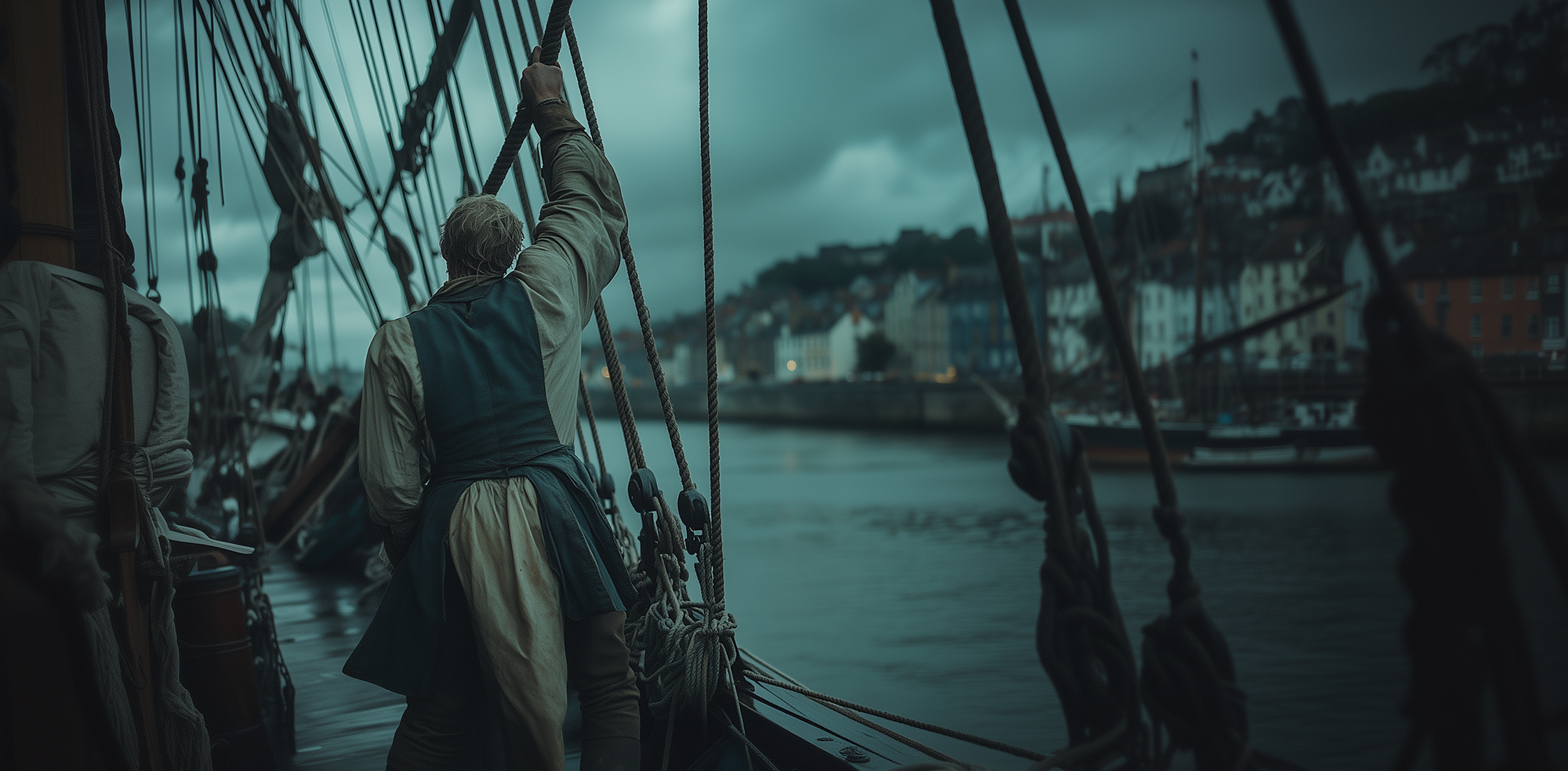Chapter 10: The Voyage
In Chapter 10 of Treasure Island, the long-anticipated voyage to the mysterious Treasure Island begins, but the journey holds secrets darker than the open sea.
As the Hispaniola sails forward, young Jim Hawkins finds himself drawn to Long John Silver, the ship’s charming and affable cook. With his friendly demeanor and captivating tales, Silver seems far removed from the terrifying pirate Jim was warned about.
“Come away, Hawkins,” Silver beckons, “come and have a yarn with John. Nobody more welcome than yourself, my son.”
Nicknamed “Barbecue” by the crew, Silver moves skillfully across the ship using ropes and handles, his one-legged figure inspiring pity from those who knew him in better days.
Adding to his peculiar charm is his 200-year-old parrot, Cap’n Flint, who squawks “Pieces of eight!” until silenced by Silver’s handkerchief. But as Jim listens and watches, the question lingers: can someone so amiable be hiding darker motives?
The answer comes in a chilling moment on the final day of their outward voyage. Seeking an apple, Jim climbs into the barrel on deck, only to find himself trapped in the midst of a conversation that turns his blood cold. Hidden and trembling, he listens as Silver speaks words that threaten the safety of everyone aboard.
What horrifying plans does Silver have in store? Can Jim warn the others, or is it already too late? The voyage to Treasure Island has begun, but the real danger may be much closer than anyone realizes. The adventure deepens, the stakes rise, and the shadows of mutiny loom large—Jim’s courage is about to be tested like never before.
TRADITIONAL SAILOR’S DUFF PUDDING
“It is my belief there was never a ship’s company so spoiled since Noah put to sea. Double grog was going on the least excuse; there was duff on odd days, as, for instance, if the squire heard it was any man’s birthday…”
Duff is a traditional British boiled or steamed pudding, ideal for sailors on long voyages. Let’s make some together.
TERMS TO KNOW
Capstan-bars – wooden bars used to operate the ship’s capstan. The capstan is a large, vertical, rotating drum to wind-up heavy ropes or cables, such as those for raising the anchor.
Tip us a stave – a request for someone to sing a song. A “stave” is a verse or a line of a song, often associated with sea shanties.
A head sea – waves that come directly toward the front (bow) of the ship. It means the waves are hitting the vessel head-on.
Coxswain – (pronounced “cox’n”) is the crew member responsible for steering and navigating a small boat or the ship’s lifeboat.
Bulkhead – a wall or barrier that separates different parts of a ship. Here, it’s described as part of the ship’s interior structure where Long John Silver and the other sailors gather.
The galley – the cooking area where Long John Silver spends his time, both as a workplace and to exert influence over the crew.
Pieces of eight – Spanish silver coins.
Babby – a colloquial, affectionate way to address others, particularly the younger members of the crew.
“You can’t touch pitch and not be mucked” – means that it’s impossible to associate with something corrupt or evil without being tainted by it. “Pitch” here refers to the sticky, black tar used on ships, which is hard to handle without getting dirty.
Double grog – grog is a mixture of rum and water—a traditional drink. “Double grog” is a stronger or more generous portion.
Duff on odd days – duff is a traditional English pudding made with flour, suet, and raisins or currants, and served as a treat to boost morale. Serving duff on odd days suggests a structured schedule meant to keep the crew satisfied and disciplined.
Bowsprit – refers to the spar extending from the bow (front) of the ship – an important part of the ship’s rigging, helping to anchor and support the foremast stays, which stabilize the sails.
Luff of the sail – the leading edge of a sail, closest to the wind. When a sailor “luffs” the sail, they adjust it so that it partially loses the wind, a maneuver used to slow the ship or change direction.




